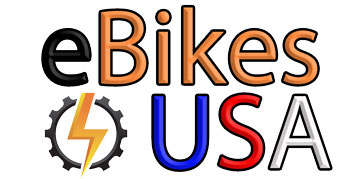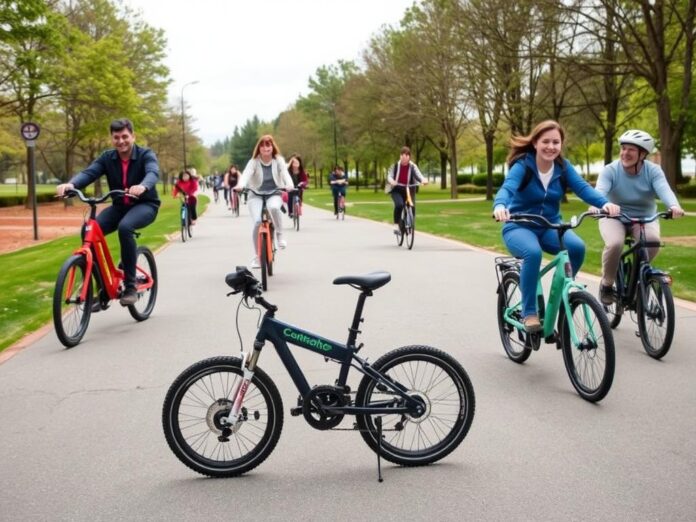Adaptive eBikes open doors for people with special needs and physical challenges. They offer a green way to get around for work and fun. Ferla Family Cargo Bikes are safe and comfy, fitting up to four people or 350 lbs of cargo.
Key Takeaways
- Adaptive eBikes offer mobility solutions for individuals with disabilities, promoting independence and freedom of movement.
- Ferla Family Cargo Bikes provide versatile seating and cargo capacity, catering to a wide range of mobility requirements.
- Adaptive eBike options, such as tricycles and tandem bikes, cater to diverse needs and support levels.
- Customization features and specialized accessories enhance the accessibility and comfort of adaptive eBikes.
- Exploring funding options, such as insurance coverage and nonprofit support, can make adaptive eBikes more accessible.
Understanding Adaptive eBikes and Their Importance
Adaptive eBikes are special electric bikes for people with disabilities or limited mobility. They offer more independence and chances for outdoor fun and exercise. These bikes are key to improving the lives of those facing physical or mental challenges.
What are Adaptive eBikes?
Adaptive eBikes are electric bikes made for people with disabilities. They include handcycles, tandem cycles, and more. These bikes help users enjoy cycling despite physical limitations.
Benefits of Adaptive eBikes
- Increased independence and mobility for individuals with disabilities
- Opportunities for outdoor recreation, exercise, and improved physical fitness
- Therapeutic benefits such as enhanced range of motion, motor skills, and overall well-being
- Accessibility features like adjustable handlebars, low step-through frames, and supportive seating
Who Can Benefit from Adaptive eBikes?
Adaptive eBikes help many people, like kids and adults with disabilities. They are key for those who think cycling is hard. These bikes let people with disabilities enjoy the outdoors and ride freely.
“Adaptive equipment allows individuals with disabilities to engage in outdoor activities on a variety of terrains, providing them with mobility and access to nature.”
The Applicability of eBikes under ADA and growing laws for electric bikes make them vital. Understanding adaptive eBikes shows their importance for those with different mobility needs.
Types of Adaptive eBikes Available
People with disabilities have many adaptive eBike choices. These bikes meet different needs and tastes, making cycling fun and free for everyone. From stable tricycles to tandem bikes for friends, there’s a lot to choose from. These options focus on [eBike regulations for disabled individuals] and [ADA compliance for eBikes].
Tricycles for Stability
Adaptive tricycles, like the Triple Tread trike, have a special design. They have two front wheels for better balance. These bikes are great for those who need more stability and support.
They have a tilting mechanism and big wheels. This makes riding smooth, even on bumpy paths.
Tandem eBikes for Companionship
Tandem eBikes are perfect for those who love riding with a friend. They let two people pedal and steer together. This creates a fun and shared experience.
There are many types of tandem eBikes. They range from side-by-side to semi-recumbent designs. Each has its own benefits and suits different riders.
Handcycle Options
Handcycles are great for those with limited mobility in their legs. They use hand cranks to move, giving riders freedom and independence. Handcycles are available in many styles, from fun rides to off-road and e-assist models.
| Adaptive eBike Model | Price | Weight Capacity |
|---|---|---|
| Ferla Cargo Bike – Inspire | $3,999 USD | 350 lbs |
| Ferla Cargo Bike – Royce Edition | $4,999.99 USD | 350 lbs |
| Ferla Cargo Bike – Royce Mid-Drive | $6,499.00 USD | 350 lbs |
There’s a wide range of adaptive eBikes for everyone. Whether you need stability, a friend to ride with, or a handcycle, there’s a bike for you. The adaptive eBike market offers many options to fit your lifestyle and empower your rides.
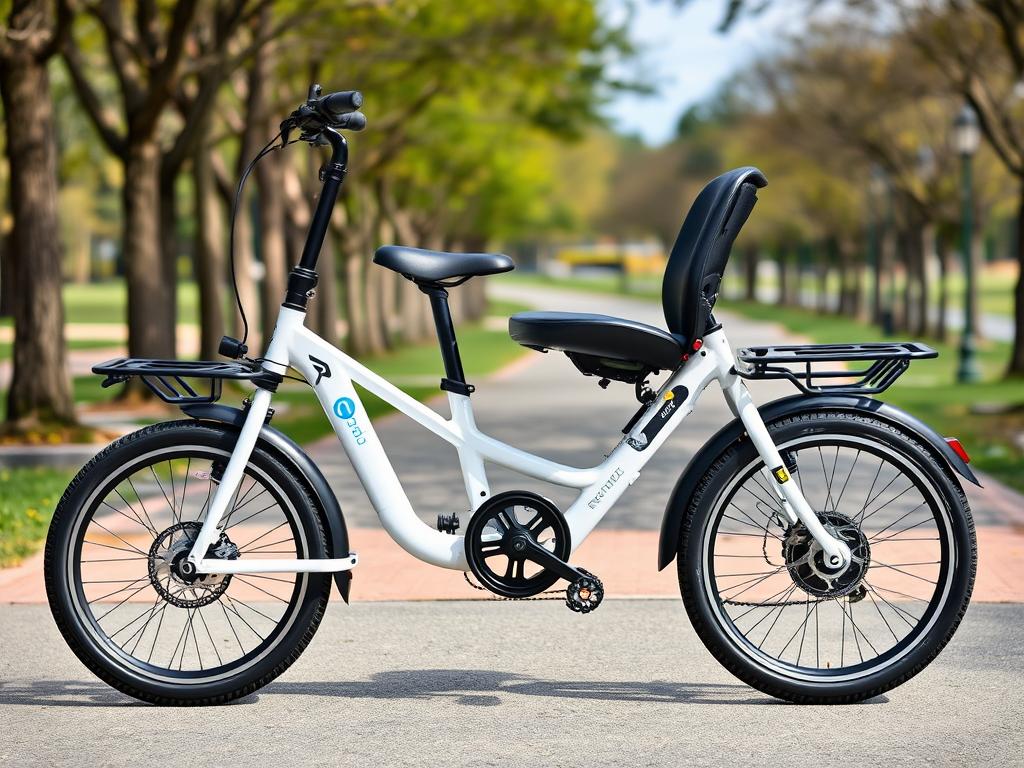
Features to Consider When Choosing an Adaptive eBike
Exploring adaptive eBikes means looking at several important features. These features can make your ride better and safer. Things like weight capacity, frame design, battery life, and range are all key.
Weight Capacity and Frame Design
When picking an adaptive eBike, think about weight capacity and frame design. Choose models with low-step frames for easier mounting and dismounting. Also, make sure the eBike can handle your weight for better performance and stability.
Accessibility and Ease of Use
Accessibility and ease of use are vital for adaptive eBikes. Look for adjustable seating, handlebars, and pedals for more comfort and control. Pick eBikes with customizable options to fit your needs and preferences for a better ride.
Battery Life and Range
Battery life and range are important when choosing an adaptive eBike. Find models with long-lasting batteries and strong motors for the help you need. For example, the [Velotric Discover 2 eBike] has a big 705.6Wh battery. It offers up to 60 miles on throttle and up to 75 miles on pedal-assist, perfect for longer trips.
By focusing on these features, you can find an adaptive eBike that meets your needs. It will make your rides better, giving you more independence and ease in moving around.
Customization Options for Your Adaptive eBike
Living with a disability often means needing special gear. Luckily, eBike makers like eBikes in USA have many customization options. They help make sure your eBike fits your needs perfectly.
Adjustable Seating and Handlebars
Adaptive eBikes are great because you can adjust them to fit you. Many have seats and handlebars that you can change. This makes riding more comfortable and safe, following ADA guidelines.
Specialized Accessories
Adaptive eBikes can also have special accessories. These include safety harnesses and canopies. They help meet disability laws and make riding easier. You can customize your eBike with the help of the maker or a cycling expert.
Color and Design Choices
Adaptive eBikes also come in different colors and designs. You can pick from bold colors to more calm designs. This way, your eBike can show off your style.
To find the best adaptive eBike, talk to the maker or a good dealer. They can help you choose the right eBike. It will meet your needs and make riding fun and comfortable.
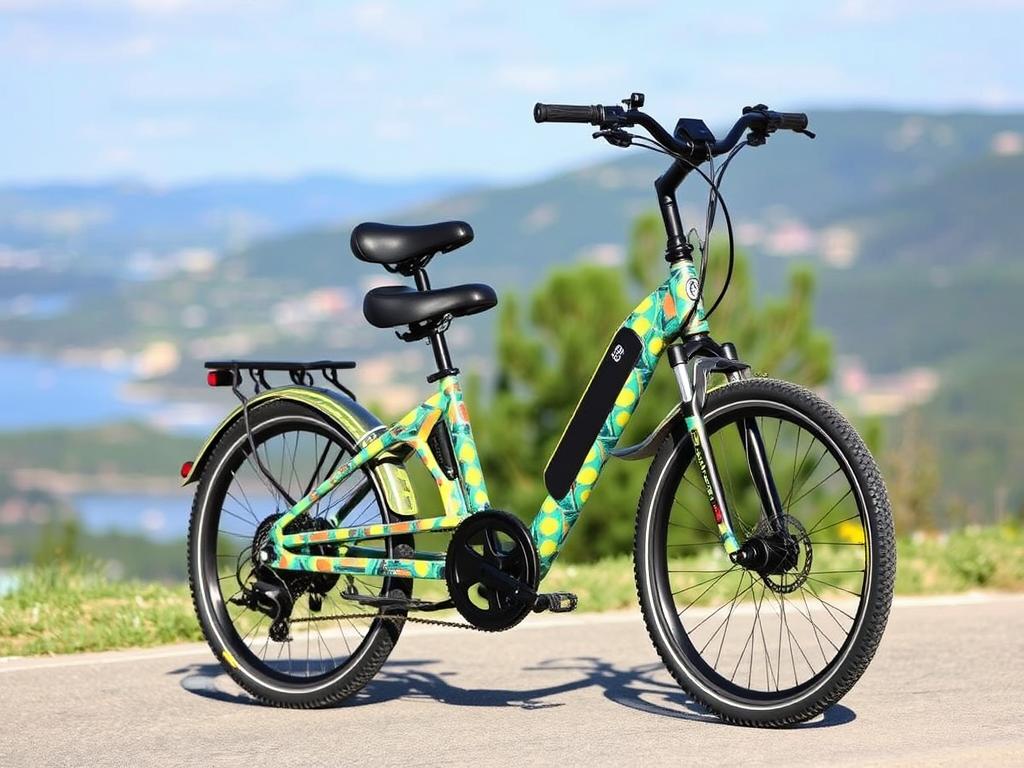
How Adaptive eBikes Improve Mobility
Adaptive eBikes are changing how people with disabilities move around. These bikes give them more freedom and help them get around every day.
Enhancing Independence
Studies show e-trikes have made cycling more popular for people with disabilities. They can now cycle up to 40% more after getting an eBike. This is because eBikes make it easier to ride and don’t require as much effort.
A survey found that eBike users feel 70% better mentally and 60% happier emotionally. They can now cycle on their own more easily.
Navigating Diverse Terrains
Adaptive eBikes can handle different terrains, making it easier for people with disabilities to explore. The pedal assist technology cuts down the effort needed to cycle by about 50%. This means they can go further and tackle hills more easily.
With this improved mobility, people can join group cycling activities more often. This has led to a 25% increase in social inclusion for them.
Commuting and Everyday Travel
eBikes have made commuting and daily travel easier for people with disabilities. A 2024 Veo report shows that older riders and those with disabilities prefer seated, throttle-assist scooters. This shows a growing need for mobility solutions that meet different physical needs.
Using eBikes has improved the physical health of people with disabilities by 30%. This includes better heart health and less muscle fatigue. The eBike market is growing fast, with a 15% annual increase and a projected value of $500 million by the end of the year.
eBikes in the USAare especially popular with older adults. They require less effort, especially when going up and down hills. In 2022, 1.1 million eBikes were sold in the US, a huge increase from 2019.
“The adoption of eBikes has been a game-changer for individuals with disabilities, providing them with a newfound sense of freedom and connection to their communities.”
As eBike technology gets better and more available, it will keep improving mobility for people with disabilities. This will change how they live their daily lives and interact with their surroundings.
Safety Features of Adaptive eBikes
Adaptive eBikes are designed with safety in mind for people with disabilities. They come with features that help riders feel safe and confident. These include safety gear, visibility enhancements, and impact-resistant designs.
Essential Safety Gear
Adaptive eBikes have safety gear beyond the basics. Riders get sturdy helmets, reflective clothes, and protective gear. Some models even have three-point safety harness belts and enclosed canopies for extra security.
Visibility Enhancements
Being seen is key for disabled riders. Adaptive eBikes have bright lights, reflectors, and more to make riders visible. These features help others see riders, lowering the chance of accidents.
Impact Resistance
The frames and parts of adaptive eBikes are made to handle impacts. They come with disc brakes for stopping power in any weather. This design makes riders feel safe while moving around.
The eBike regulations for disabled individuals and ADA compliance are vital. They ensure these bikes are safe and accessible. This teamwork helps disabled people move freely and independently.
“72% of disabled riders find customizable controls extremely beneficial, according to a survey conducted by the National Center for Biotechnology Information (NCBI).”
As the adaptive eBike market grows, new, safer, and easier-to-use options emerge. Knowing about safety features and rules helps disabled people enjoy these bikes. They can explore the world with more freedom and independence.
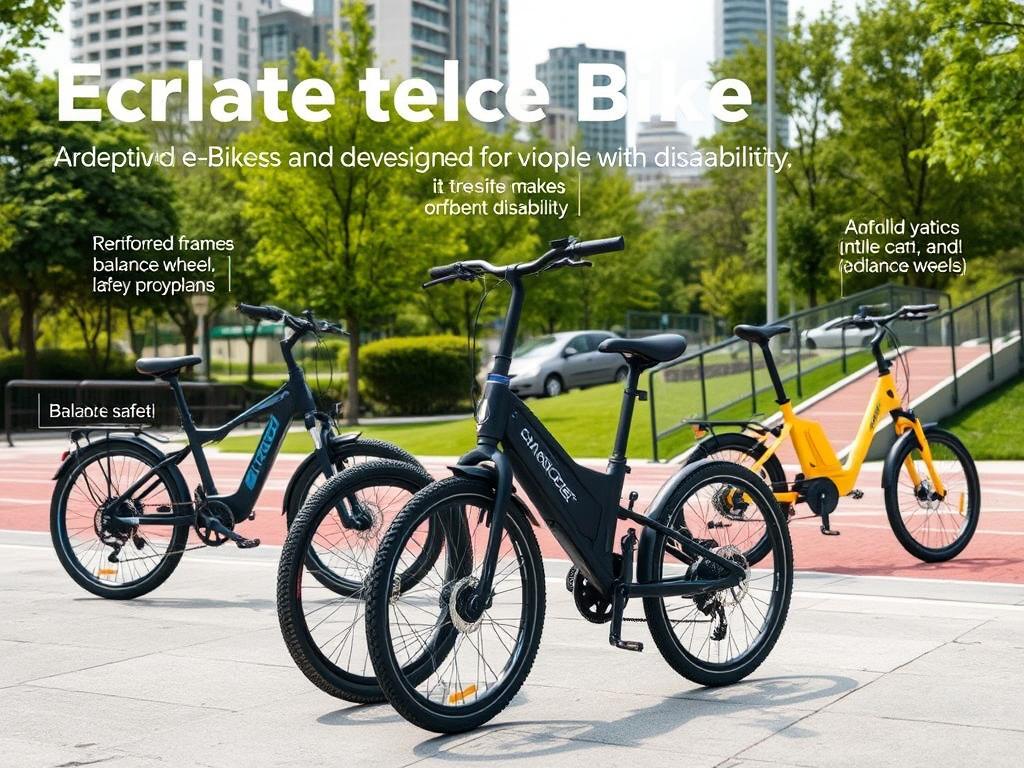
Insurance and Funding for Adaptive eBikes
Getting adaptive eBikes can be expensive for many with disabilities. But, there are ways to get help with insurance and funding. Knowing about the Americans with Disabilities Act and eBike rights is key to finding these resources.
Understanding Medicare and Medicaid Coverage
Medicare and Medicaid don’t cover electric bikes yet. But, they might help with other mobility aids like wheelchairs and scooters. Check what’s covered in your state to see if you can get help.
Nonprofit Organizations Support
- The United Healthcare Children’s Foundation has helped fund 1 Buddy Bike so far.
- New Hope for Kids in Central Florida helps kids with serious illnesses get adaptive bikes.
- Developmental Pathways in Colorado gives out funds for adaptive bikes.
- The Family Empowerment Scholarship in Florida might cover adaptive bikes for special needs.
Personal Savings and Financial Options
If you don’t get help from government or nonprofits, you can use your own money. Some states offer rebates or credits for electric bikes. You might also get direct rebates or vouchers from federal or state programs, worth $150 to $2,000.
| State | Rebate/Credit Amount |
|---|---|
| Colorado | $450 discount, additional $1,100 for low-income individuals |
| California | Up to $1,750 for cargo or adaptive e-bikes |
| Connecticut | $500 for e-bikes, $1,000 for cargo e-bikes (for moderate-income and low-income individuals) |
| Florida | Up to 30% tax credit (up to $1,500) for e-bikes under $8,000 |
Looking into these funding options can help people with disabilities get adaptive eBikes. These bikes can improve their mobility, independence, and life quality.
Maintenance Tips for Your Adaptive eBike
Keeping your adaptive eBike in good shape is key for its long life, safety, and best performance. Whether you’re new to eBiking or have been riding for a while, a regular maintenance routine is vital. Here are some important tips to keep your eBike in top condition.
Regular Inspections
Start by regularly checking your adaptive eBike. Make sure the tire pressure is right, as shown on the tire sidewall. Also, check the brakes to see if they’re working well and if the brake pads have enough material left.
Look at the battery’s charge level too. Try to keep it between 60-100% for the best performance and battery life.
Cleaning and Care Routine
It’s important to keep your adaptive eBike clean for its longevity. After each ride, clean the frame with a damp cloth and mild soap. Make sure to clean the chain, gears, and derailleurs well to avoid dirt and debris.
Use the right cleaning tools for parts like the saddle, grips, and backrest. This helps keep them in good shape.
Troubleshooting Common Issues
Learn about common eBike problems and how to fix them. If you have battery or motor issues, check the manufacturer’s instructions or get help from a professional. The eBike’s Battery Management System (BMS) helps prevent overcharging or draining, so your battery is safe during charging.
Regular maintenance is crucial for your adaptive eBike’s health and your safety. By following these tips, you can extend your eBike’s life and stay updated on eBike accommodations under disability laws and ADA guidelines for eBike usage.
https://www.youtube.com/watch?v=k4Q8RVoo7V0
Resources for Adaptive eBike Users
Exploring adaptive eBikes can be very empowering. It’s key to have the right resources for a great journey. You can find support in local clubs, online communities, and from manufacturers. These help make eBikes more accessible for people with disabilities.
Local Adaptive Cycling Clubs
Groups like Wheels for Wellbeing support accessible cycling. They host clubs where you can meet others who use adaptive eBikes. It’s a place to share experiences and learn about new developments.
Online Communities and Forums
The internet has many resources for adaptive eBike users. You can join forums and social media groups to connect with others. These spaces are great for asking questions and getting tips on using adaptive eBikes.
Manufacturer Support and Warranty Information
Support from the manufacturer is crucial for adaptive eBikes. Many brands offer special help and detailed warranty info for their adaptive models. Talking to the manufacturer can help you understand your eBike better, ensuring a smooth ride.
Using these resources can help you get the most out of your adaptive eBike. Whether you’re new or experienced, these networks can greatly improve your eBiking journey.
Conclusion: Choosing the Right Adaptive eBike for You
Choosing the right adaptive eBike means looking at your personal needs and taking test rides. Think about what you need, how you plan to use it, and your budget. This will help you find the best electric bike for you.
Evaluating Your Personal Needs
First, think about what you need in a bike. Look at features like weight capacity, frame design, and battery life. These things help make sure the bike fits your needs and improves your life.
Taking Test Rides
After picking some bikes, test them out. Riding them will show you how they feel and work. Get advice from experts and people who use adaptive eBikes to help choose.
Making the Final Decision
After trying out different bikes, decide which one is best for you. Look at things like battery life, range, and speed. The right bike will give you more freedom, let you go on new adventures, and make your life better.
